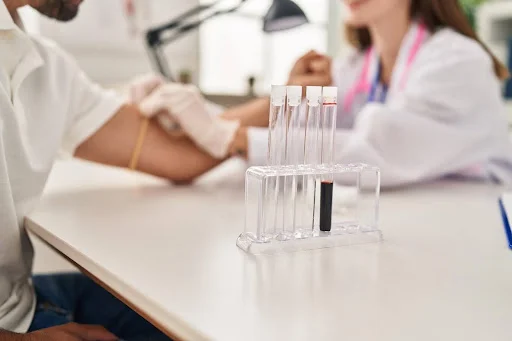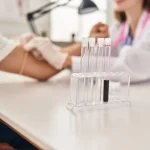Clinical trials can seem mysterious from the outside—complex medical procedures happening behind closed doors with little explanation of what actually occurs. If you’re considering participation but are uncertain what the process involves, this demystifies the journey from initial contact through to study completion.
Understanding each stage helps you know what to expect, prepare accordingly, and participate with confidence. Whilst specific details vary between trials, the fundamental structure remains remarkably consistent. Here’s your comprehensive walkthrough of how clinical trials actually work from a participant’s perspective.
The Screening Process: Determining Eligibility
Your clinical trial journey begins with screening—the process of determining whether you’re suitable for participation for Clinical Trials. This isn’t a personal rejection if you don’t qualify; it’s a way to ensure trials recruit participants who are appropriate for valid scientific results and your safety.
Initial screening often happens remotely. You may be asked to complete online questionnaires about your medical history, current medications, lifestyle factors, and specific symptoms or conditions. Researchers use these responses to identify candidates who are obviously unsuitable before investing time in detailed assessments.
If preliminary screening suggests potential eligibility, you’ll attend in-person screening appointments. These typically involve detailed discussions of medical history, where researchers ask comprehensive questions about past illnesses, surgeries, medications, allergies, and family medical history. Be completely honest—withholding information may seem helpful for qualifying, but it creates safety risks and compromises research validity.
Physical examinations assess your current health status. Depending on the trial, this may include basic checks, such as blood pressure and heart rate, or more comprehensive examinations. Blood tests, urine samples, ECGs, or other diagnostic procedures might be required to verify you meet specific health criteria.
Screening can take hours or occur across multiple appointments. It may feel invasive or excessive, but thorough screening protects both you and the integrity of research. Many people screen but don’t qualify—perhaps 30-50% of screened individuals in some trials. This is entirely normal and doesn’t indicate anything wrong with you Clinical Trials.
If screening reveals unexpected health issues, researchers typically inform you and might recommend follow-up with your regular doctor. This incidental benefit sometimes highlights problems that require attention.
Connect the dots — this related post brings clarity to what matters most.
Informed Consent: Understanding What You’re Agreeing To
Suppose screening confirms eligibility, the informed consent process begins—arguably the most crucial trial stage. This isn’t just signing forms; it’s ensuring you genuinely understand what participation involves and freely agree without pressure or coercion.
You’ll receive detailed written information describing the trial’s purpose, what participation requires of you, how long involvement lasts, what procedures you’ll undergo, potential risks and side effects, possible benefits you might receive, alternatives to participation, and your right to withdraw anytime without penalty.
Take this information home. Read thoroughly. Research teams should encourage this, rather than pressuring immediate decisions. Good researchers want informed, voluntary participants who understand commitments, not reluctant conscripts who signed without proper consideration.
You’ll have opportunities to ask questions—use them to the fullest. Ask about anything unclear, concerning, or simply interesting. Questions might include: what exactly happens at each visit, how much time will appointments take, what are the most common side effects, what’s the worst-case scenario, how will you monitor my safety, and what happens if I experience problems?
Consent discussions should be conversational and educational, rather than transactional. Researchers should use plain language, avoid jargon, and ensure they genuinely comprehend rather than just nodding along to technical explanations they don’t actually understand Clinical Trials.
Signing consent forms isn’t the end of this process. Informed consent is ongoing—you can ask questions anytime during the trial. If circumstances change or you develop concerns, you can withdraw without providing reasons or facing penalties. Your consent is active and revocable, not a binding contract trapping you in participation.
The Treatment Phase: What Actually Happens
Once consented, the treatment phase begins—what you’ll actually do as a participant. This varies enormously between trials but typically involves scheduled visits for treatments, assessments, or both.
Visit frequency depends on the trial. Some require weekly attendance, while others require monthly or even less frequent attendance. Appointments may last anywhere from 30 minutes to several hours. Some trials include overnight stays for intensive monitoring. Understand time commitments thoroughly before consenting.
During visits, you may receive experimental treatments, including medications, injections, procedures, or devices that are being tested. In controlled trials, some participants receive either the standard treatment or a placebo instead. You might not know which you’re receiving—this “blinding” prevents bias affecting results.
Extensive monitoring occurs throughout. This includes regular physical examinations, checking for changes, blood tests to monitor how your body responds, questionnaires about symptoms and side effects, vital sign measurements at each visit, and possibly diagnostic procedures such as scans or ECGs.
Researchers track everything meticulously. You might keep symptom diaries, wear monitoring devices, or maintain medication logs. This data is essential for understanding how treatments affect participants.
Between visits, you’ll have contact information for reporting problems. Trials include protocols for managing adverse events—unexpected symptoms, concerning changes, or emergencies. Don’t hesitate to contact research teams about anything worrying, regardless of whether it seems “serious enough” to mention.
The treatment phase is also when compensation typically occurs—either on a per-visit basis or periodically throughout the trial. Payment isn’t for taking risks, but rather for reimbursing your time, travel, and inconvenience.
Follow-Up and Monitoring: After Treatment Ends
Clinical trials don’t end immediately when treatment finishes. Follow-up periods assess the longer-term effects and ensure participant safety after active treatment has concluded.
Follow-up duration varies dramatically. Some trials include just a few weeks of monitoring after treatment ends. Others require follow-up for months or even years, particularly trials testing treatments where long-term effects matter critically—cancer treatments, for example, often include years of follow-up monitoring survival and recurrence.
Follow-up visits typically involve similar assessments to treatment-phase appointments—physical examinations, blood tests, symptom questionnaires, and safety monitoring—but are conducted less frequently and usually in a less invasive manner. You’re no longer receiving experimental treatment; you are being monitored for any lasting effects.
These follow-up commitments should be clearly explained during the informed consent process. Participating in the study means committing to the whole timeline, including post-treatment monitoring. Dropping out during follow-up can compromise trial results even if you’ve completed treatment, though you retain the absolute right to withdraw if necessary.
For some trials, follow-up includes transitioning to standard care if you were receiving experimental treatment. Researchers help coordinate this transition with your regular healthcare provider to ensure continuity of care.
Long-term follow-up may involve only periodic questionnaires or phone calls, rather than in-person visits. Remote follow-up reduces burden whilst maintaining safety monitoring.
Throughout follow-up, continue to report any concerning symptoms, even if they seem unrelated to the trial. Identifying unexpected long-term effects is precisely why extended monitoring occurs. Your observations contribute valuable safety data.
Results and What Happens Next
Clinical trials can take years, from initial recruitment through to the publication of results. Individual participants typically complete their involvement long before the overall trial results are available. Understanding this timeline helps manage expectations about when you’ll learn outcomes.
Most trials don’t provide individual results to participants during involvement. This protects scientific integrity—knowing whether you received experimental treatment or a placebo might bias how you report symptoms. However, some trials inform participants about their group assignment after they have completed it.
Once trials have finished recruiting and all participants have completed follow-up, researchers analyse the collected data. This analysis can take months or years, depending on the trial size and complexity. Statistical analyses assess whether treatments are effective, compare groups, and identify potential side effects.
Results are typically published in medical journals, and the peer-review process, where independent scientists evaluate methodology and conclusions before publication. This ensures quality and validity. Published results become publicly available, typically accessible through medical literature databases.
Many trials inform participants when results are published, sending them summaries that explain what researchers discovered. This isn’t universal practice, but it’s becoming more common as researchers recognise participants’ interest in outcomes they helped generate.
Results might show the experimental treatment worked better than existing options, worked similarly, worked worse, or had unacceptable side effects. Not every trial produces positive results—”negative” findings, showing that treatments don’t work, are equally valuable scientifically, as they prevent ineffective therapies from reaching patients.
Your contribution matters regardless of trial outcomes. Whether results are positive, negative, or inconclusive, you’ve advanced medical knowledge. That’s the fundamental value of clinical trial participation—contributing to the gradual accumulation of evidence that shapes future healthcare.
Take the next step — explore more and uncover stories beyond the ordinary.







